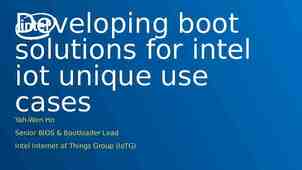FIDIC 2005 Beijing Workshop 14 Risk and Liability for Consulting
18 Slides682.00 KB
FIDIC 2005 Beijing Workshop 14 Risk and Liability for Consulting Engineers: An Australian Perspective Tony Barry, President and Therese Charles CEO Association of Consulting Engineers Australia
Risk or Liability Management? Risk management is one aspect of project management and like quality management, environmental management and safety management it is about the project or the service we deliver to our clients Liability management on the other hand is about managing the impact of claims for loss on our business 2
Will Managing Risk Limit our Liability? If risk is managed effectively, it may reduce the likelihood and severity of loss However, the consulting engineer is rarely in a position to manage, control or bear project risk Liability management may prevent or reduce the loss incurred by the consulting engineer. 3
The Business Environment The last 10 years PI Insurance Where are we heading? ACEA Initiatives The Problem Onerous Terms What can you do? 4
Last 10 years Increasing obligations on consultants - well beyond common law Common law has moved in its application exposing consultants to new sources of claim Clients laying off responsibility for own actions Trade Practices exposure Occupational Health & Safety Insurance crisis 5
PI Insurance 2001 -2004 Increased premiums Absorb the first level of loss increasing deductibles Increasing use of captive insurance Restricted cover - narrower policy wording Insurers concentrate on risk selection Restrictions on availability 6
PI Insurance - Unreasonable Outcomes? Could infer consultants are taking on risks they cannot manage or bear Could infer the problem is inherent in the forms of project delivery we use When the loss ratios improve, capital will flow back into the PI Insurance market 7
ACEA Initiatives Law reform Policy debate Information Negotiation 8
ACEA Initiatives Promoting Legislative Reform Professional Standards Legislation Proportionate Liability Trade Practices Act Amendments Educating Insurers and Firms Insurer Site Visits Guidelines and Tips for Firms Continuing Professional Development Individual Contacts for Firms Talking to Clients Public Sector - APCC Guidelines Private Sector - Discussions to Follow 9
PI Insurance - A Scarce Resource Engineers fees - 1% - 5% project Insurance premiums 2% - 4% income Claim pool resource say 0.07 - 0.1% industry value Building & Construction industry value say 35 Billion Claims pool resource say 35 Million Reported claims history (IBNR’s) 300% of premium 10
APCC /ACEA PI Guidelines Professional indemnity insurance of consultants relate to project risk and the services required A consistent approach (formula developed for determining project risk and insurance requirements Principal-organised insurance recognised as an alternative to consultant PI insurance, or for some extreme risk projects 11
The Problem Client risk dumping through contracts Risks inherent in Design & Construct, no avenue to claim against client, the losses crystallise in the D&C team Clients pass on risk to consultants for fitness for purpose, delayed project delivery, inadequate or incorrect information, cost overruns, safety and consequential loss Most of the risks are commercial risks in contract not in the consultant’s control Onerous contracts create grounds for claim against consultant Neither the Consultants or their PI cannot support project risks 12
Onerous Terms Create Liability High standard of care Responsibility for client supplied information Absolute Fitness for Purpose warranties Strict compliance Open ended Indemnities Duty of Care to multiple parties Liability for delays outside control Disclosing terms of PI Policy 13
The Solution Don’t accept unreasonable terms – walk away Negotiate terms which focus on maintaining a good relationship and a good business Use Limits of Liability above which Clients carry the risk Adopt commercially sustainable PI Insurance levels and guidelines 14
Limits of Liability - the Firms’ Perspective reduces the impact of unreasonable indemnities dissuades clients from taking legal action where the prospect of recovery is small assists in maintaining the firm as an attractive risk to insurers protects the livelihood of thousands employees protects the owners interests in the firm assists to maintain the professions as an attractive career 15
Limits of Liability - the Clients’ Perspective reflects an agreed realistic allocation of risk between the Consultant and the Client forces the Client to properly consider managing (and insuring) the risk which it in reality retains protects the Client from the impact of adverse outcome of a claim against the Consultant taken out by another client 16
Limits of Liability - the Clients’ Perspective maintains PI insurance as being available to Consultants generally keeps the cost of providing consulting services reasonable assists to maintain professional services for the community equitable basis for tendering – all required to offer same capacity avoid unsustainable risk-taking culture 17
Therese Charles Chief Executive on behalf of Level 12, 75 Miller Street North Sydney NSW 2059 (02) 99224711 www.acea.com.au [email protected] 18























